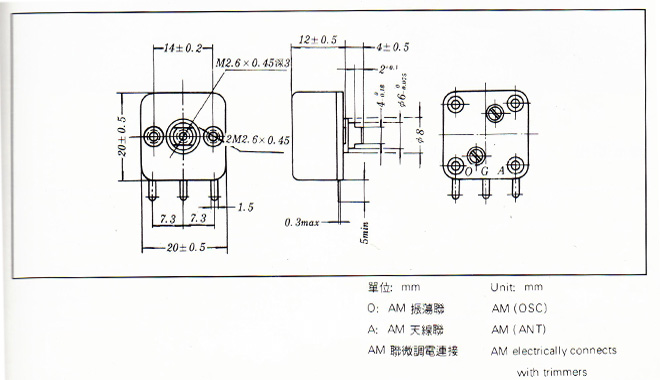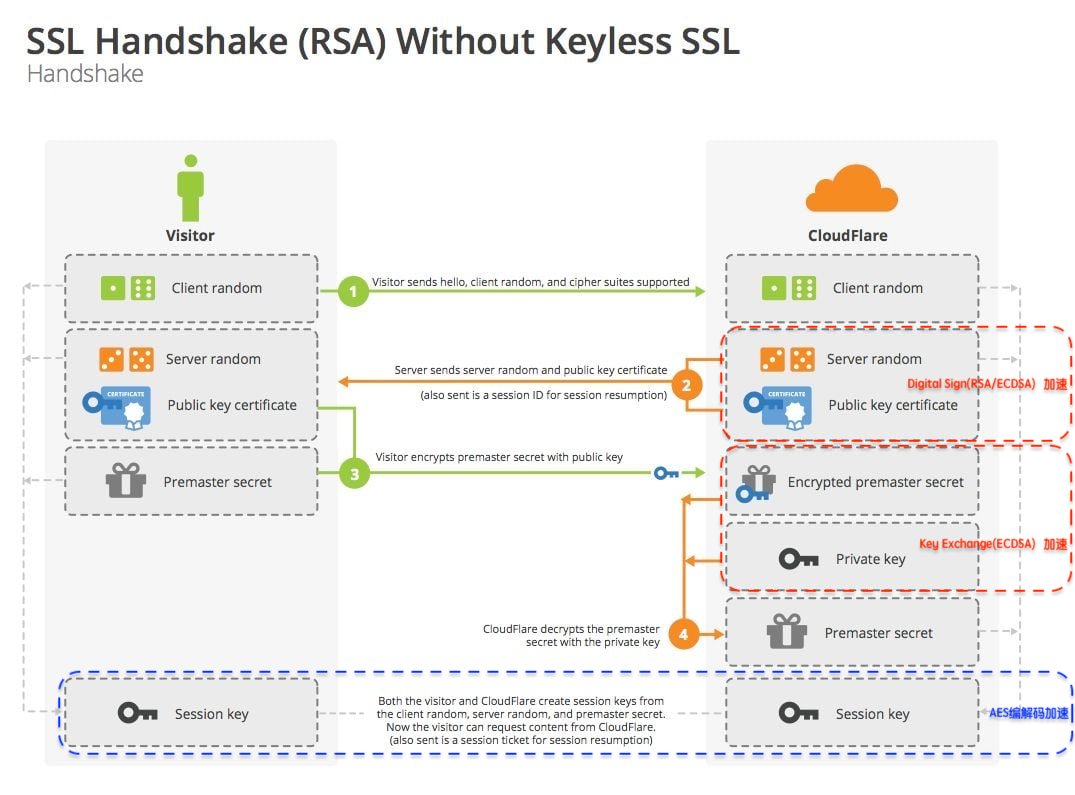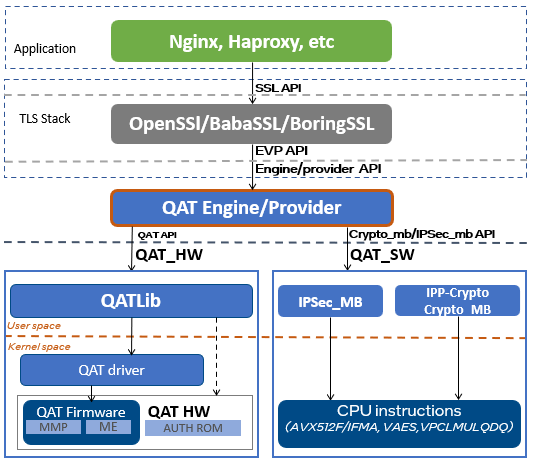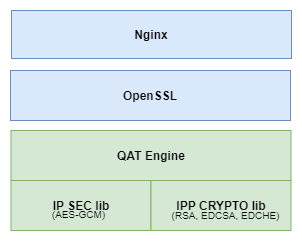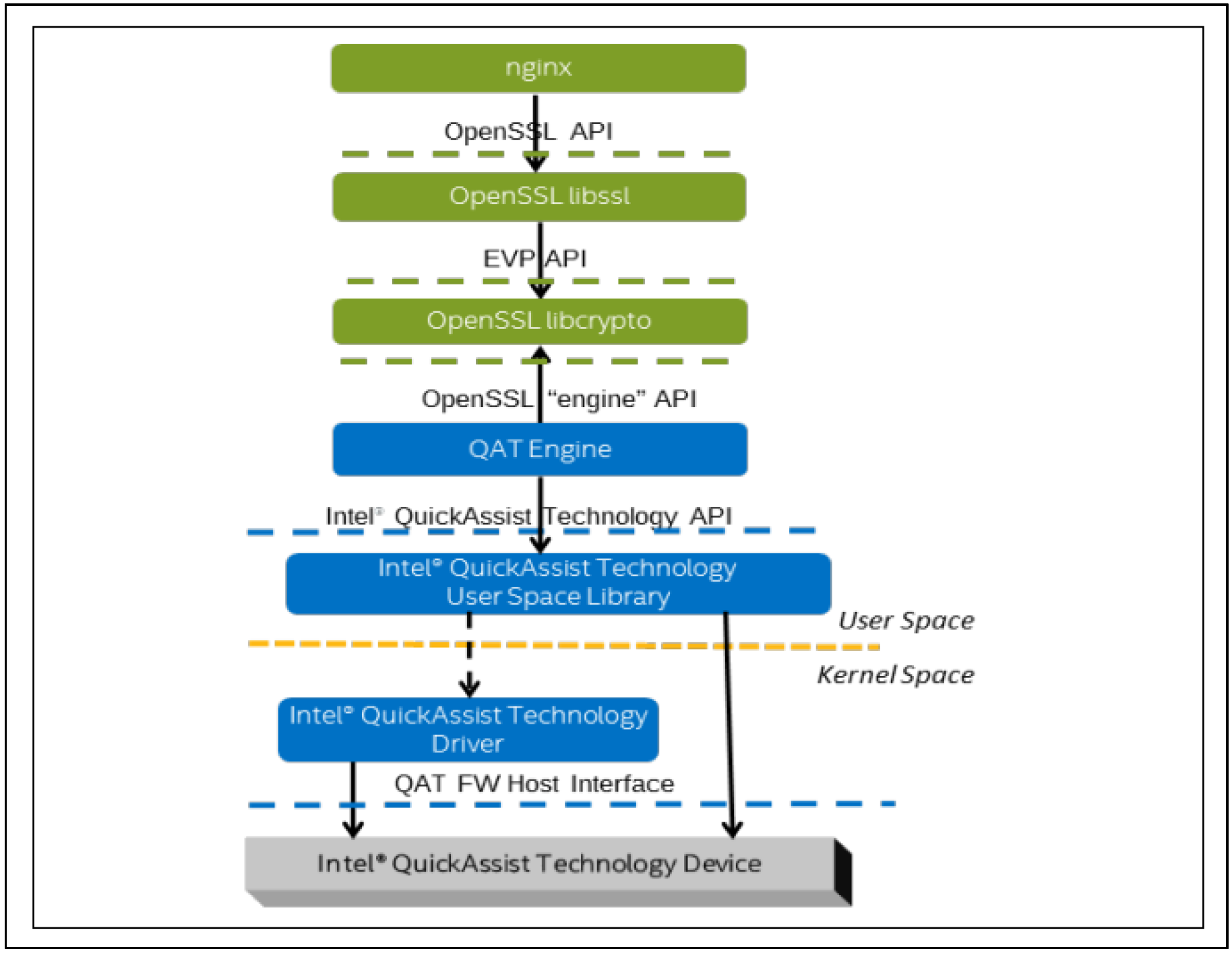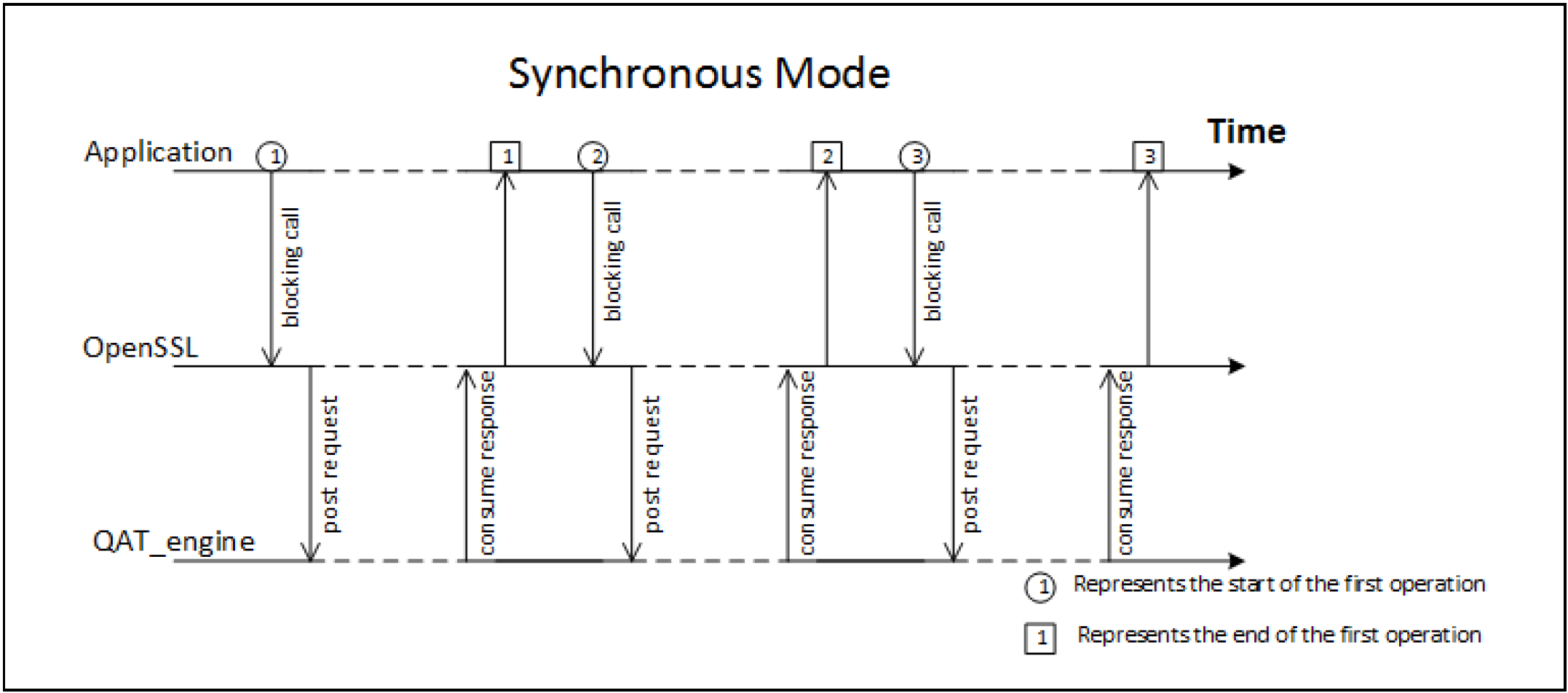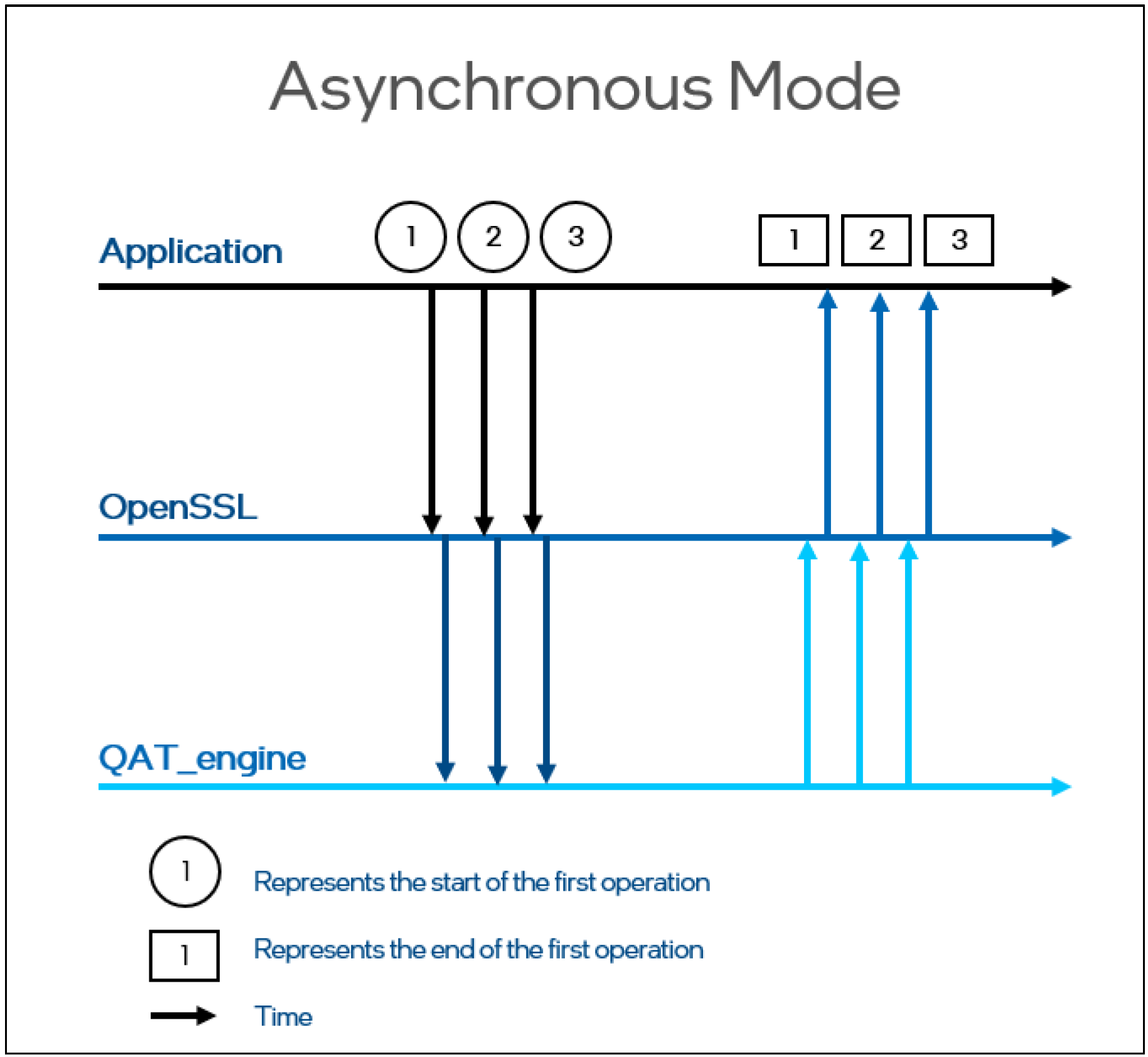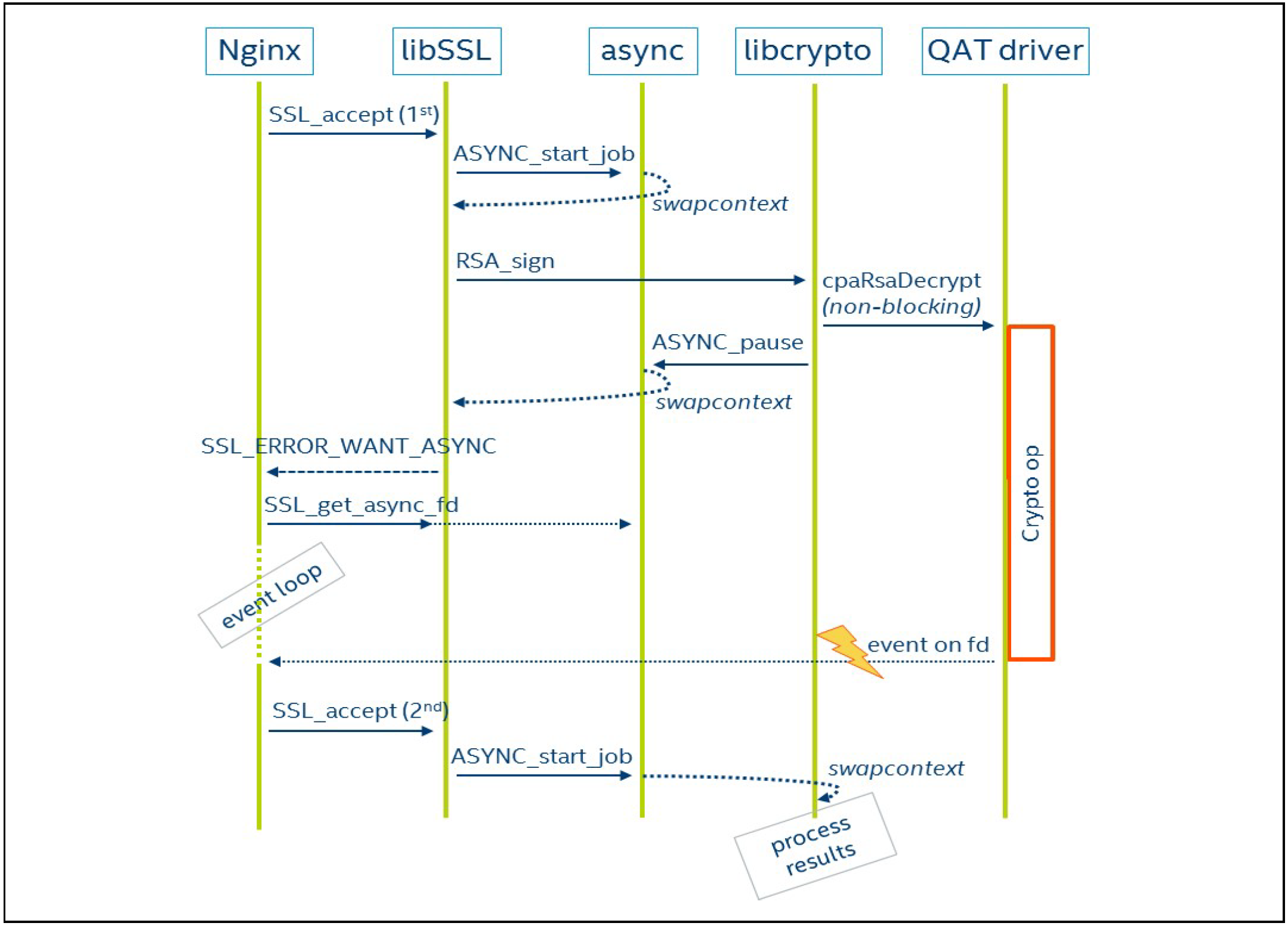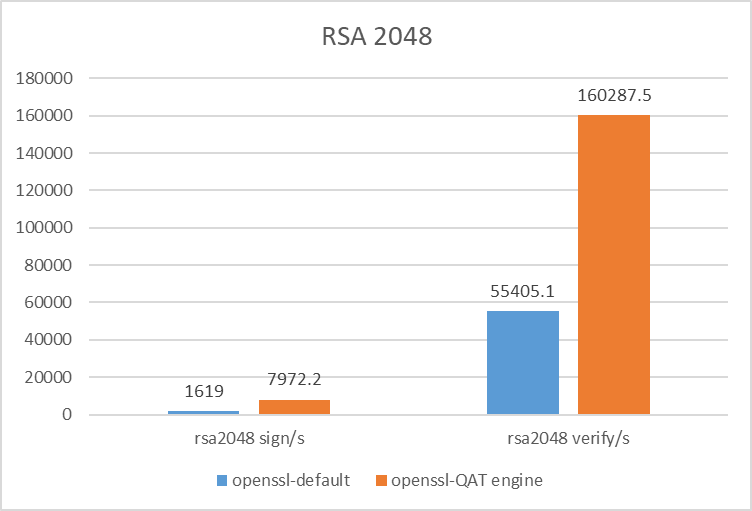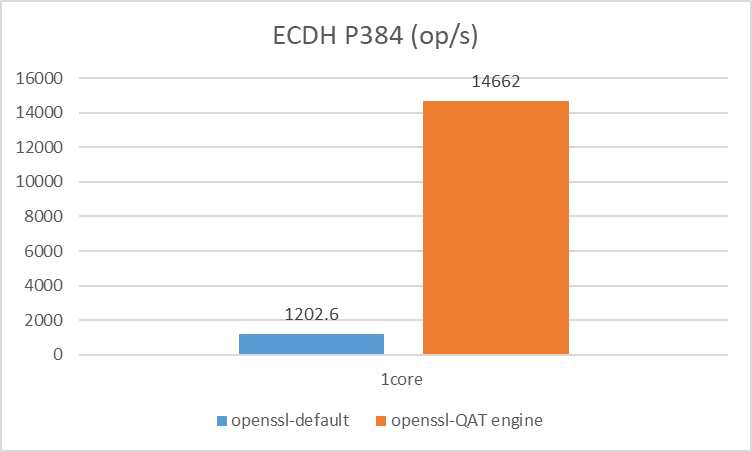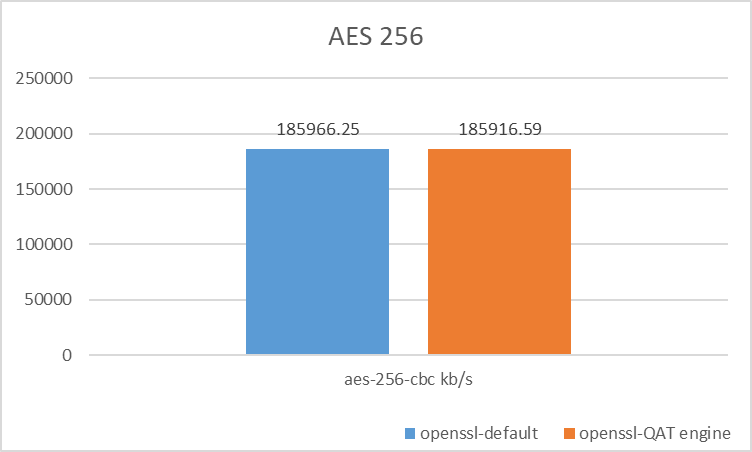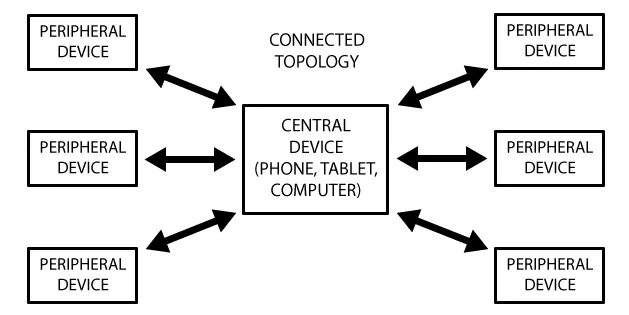如果身边有银行的U盾,或者其他Ukey产品,可以使用这些产品完成对数据的加解密,针对个人的敏感数据进行加密处理。
1-涉及的内容
- ubuntu 24.04.2 LTS
- Python 3.8 / 3.11
- asn1crypto 1.5.1
- 使用的 Python3 库 ctypes 作用:
是 Python3 的外部函数库。提供与 C语言兼容的数据类型,并允许调用 DLL 或共享库中的函数。
- 使用的 Python3 库 asn1crypto 作用:
是 Python3 的外部函数库。ASN.1 格式解析组装 PKCS#7 格式的报文。版本不低于 1.5.1 ,否则可能编译错误。
- 使用的Ukey:文鼎创的一款Key。
与Ukey使用会有配套的驱动程序(管理工具),安装之后会在【C:\Windows\System32】释放对应dll库文件,使用ctypes库调用这个dll文件。
- dll的接口函数
现在各厂家的Ukey一般都支持国密算法(SKF),使用SKF中的函数,实现数据的加解密。了解到文鼎创这边提供的SKF的函数中有使用ECC非对称算法完成数据加解密。本文内容就是用里面的ECC算法完成数据分非对称加解密。
2-动态库涉及的函数及结构体
2.1 相关结构体
ECC签名结果结构体
C中的结构体声明:
|
1 2 3 4 5 6 7 8 9 |
// ECC 签名结构体 // 信息安全技术 智能密码钥匙应用接口规范 GB/T 35291-2017 #define ECC_MAX_XCOORDINATE_BITS_LEN 512 typedef struct Struct_ECCSIGNATUREBLOB{ BYTE r[ECC_MAX_XCOORDINATE_BITS_LEN/8]; BYTE s[ECC_MAX_XCOORDINATE_BITS_LEN/8]; } ECCSIGNATUREBLOB, *PECCSIGNATUREBLOB |
Python的ctype库声明:
|
1 2 3 4 5 6 7 |
ECC_MAX_XCOORDINATE_BITS_LEN = 512 # ECC 签名结构体 # 信息安全技术 智能密码钥匙应用接口规范 GB/T 35291-2017 class Struct_ECCSIGNATUREBLOB(Structure): _fields_ = [("r", c_ubyte * int(ECC_MAX_XCOORDINATE_BITS_LEN / 8)), ("s", c_ubyte * int(ECC_MAX_XCOORDINATE_BITS_LEN / 8))] |
ECC公钥结构体
C中的结构体声明:
|
1 2 3 4 5 6 7 8 9 |
// 信息安全技术 智能密码钥匙应用接口规范 GB/T 35291-2017 typedef struct Struct_ECCPUBLICKEYBLOB { ULONG BitLen; //模数的实际位长度 必须是 8 的倍数 BYTE XCoordinate[ECC_MAX_XCOORDINATE_BITS_LEN/8]; BYTE YCoordinate[ECC_MAX_YCOORDINATE_BITS_LEN/8]; }ECCPUBLICKEYBLOB, *PECCPUBLICKEYBLOB; //ECC_MAX_XCOORDINATE_LEN为ECC算法X坐标的最大长度(512); //ECC_MAX_YCOORDINATE_LEN为ECC算法Y坐标的最大长度(512)。 |
Python的ctype库声明:
|
1 2 3 4 5 6 7 8 9 10 |
# ECC 公钥结构体 # 信息安全技术 智能密码钥匙应用接口规范 GB/T 35291-2017 class Struct_ECCPUBLICKEYBLOB(Structure): """官方文档是C语言的 ULONG,不管操作系统是32位还是64位,都要求是 4个字节。 但是 ctypes.c_ulong 在64位系统下是8个字节,在32位系统下是 4个字节, 所以这部分的定义我们要改成 c_uint32,而不是 c_ulong 来解决这个问题 """ _fields_ = [("BitLen", c_uint32), ("XCoordinate", c_ubyte * 64), ("YCoordinate", c_ubyte * 64)] |
密文数据结构体
C中的结构体声明:
|
1 2 3 4 5 6 7 8 |
// 类型定义 信息安全技术 智能密码钥匙应用接口规范 GB/T 35291-2017 typedef struct Struct_ECCCIPHERBLOB { BYTE XCoordinate[ECC_MAX_XCOORDINATE_BITS_LEN/8]; BYTE YCoordinate[ECC_MAX_XCOORDINATE_BITS_LEN/8]; BYTE HASH[32]; ULONG CipherLen; BYTE Cipher[1]; } ECCCIPHERBLOB, *PECCCIPHERBLOB; |
Python的ctype库声明:
|
1 2 3 4 5 6 7 8 9 10 11 12 |
# 密文数据结构 # 信息安全技术 智能密码钥匙应用接口规范 GB/T 35291-2017 class Struct_ECCCIPHERBLOB(Structure): """官方文档是C语言的 ULONG,不管操作系统是32位还是64位,都要求是 4个字节。 但是 ctypes.c_ulong 在64位系统下是8个字节,在32位系统下是 4个字节, 所以这部分的定义我们要改成 c_uint32,而不是 c_ulong 来解决这个问题 """ _fields_ = [("XCoordinate", c_ubyte * 64), ("YCoordinate", c_ubyte * 64), ("HASH", c_ubyte * 32), ("CipherLen", c_uint32), ("Cipher", c_ubyte * 1)] |
2.2 相关函数
|
1 2 3 4 5 6 7 8 9 10 11 12 13 14 15 16 17 18 19 20 21 22 23 24 25 26 27 28 29 30 31 32 33 34 35 36 37 38 39 40 41 42 43 44 45 46 47 48 49 50 51 52 53 54 55 56 57 58 59 60 61 62 63 64 65 66 67 68 69 70 71 72 73 74 75 76 77 |
/*设备相关*/ //枚举设备 ULONG DEVAPI SKF_EnumDev(BOOL bPresent, LPSTR szNameList, ULONG *pulSize); //连接设备 ULONG DEVAPI SKF_ConnectDev(LPSTR szName, DEVHANDLE *phDev); //断开连接 ULONG DEVAPI SKF_DisConnectDev(DEVHANDLE hDev); /*应用相关*/ //枚举应用 ULONG DEVAPI SKF_EnumApplication(DEVHANDLE hDev, LPSTR szAppName, ULONG *pulSize); //打开应用 ULONG DEVAPI SKF_OpenApplication(DEVHANDLE hDev, LPSTR szAppName, HAPPLICATION *phApplication); //关闭应用 ULONG DEVAPI SKF_CloseApplication(HAPPLICATION hApplication); /*容器相关*/ //枚举容器 ULONG DEVAPI SKF_EnumContainer(HAPPLICATION hApplication, LPSTR szContainerName, ULONG *pulSize); //打开容器 ULONG DEVAPI SKF_OpenContainer(HAPPLICATION hApplication, LPSTR szContainerName, HCONTAINER *phContainer); //关闭容器 ULONG DEVAPI SKF_CloseContainer(HCONTAINER hContainer); /*密码服务*/ //导出公钥 ULONG DEVAPI SKF_ExportPublicKey(HCONTAINER hContainer, BOOL bSignFlag, BYTE* pbBlob, ULONG* pulBlobLen); //ECC外来公钥加密 ULONG DEVAPI SKF_ExtECCEncrypt(DEVHANDLE hDev, ECCPUBLICKEYBLOB* pECCPubKeyBlob, BYTE* pbPlainText, ULONG ulPlainTextLen, PECCCIPHERBLOB pCipherText); //私钥解密 bSignFlag false -- 加密私钥 true -- 签名私钥 ULONG DEVAPI SKF_ECCDecrypt(HCONTAINER hContainer, BOOL bSignFlag, const ECCCIPHERBLOB* pCipherText, BYTE *pbData, ULONG *pdwDataLen); /*注:私钥解密接口应该是厂商的扩展接口,如果不是wdc的key,可能提供的驱动没有这个函数,那么可以使用对称算法对数据进行加解密,或者使用SKF_ExtECCDecrypt(ECC外来私钥解密)*/ /* 参数说明: 1:BOOL bPresen:为TRUE表示取当前设备状态为存在的设备列表。为FALSE表示取当前驱动支持的设备列表。 2:ULONG *pulSize: 输入时表示设备名称列表的缓冲区长度,输出时表示(一般是)前一个参数(如szNameList)需要获取的,所占用的空间大小。 3:DEVHANDLE phDev:设备的句柄 4:HAPPLICATION hApplication:应用的句柄 5:HCONTAINER hContainer:容器的句柄 6:BOOL bSignFlag:TRUE,签名证书;FALSE,加密证书 7:ECCPUBLICKEYBLOB* pECCPubKeyBlob:公钥类型参数 8:ECCCIPHERBLOB* pCipherText:待解密的数据类型 */ // 摘要算法 ULONG DEVAPI SKF_DigestInit(DEVHANDLE hDev, ULONG ulAlgID, ECCPUBLICKEYBLOB *pPubKey, unsigned char *pucID, ULONG ulIDLen, HANDLE *phHash); /* 此方法进行杂凑(国密标准里把摘要称之为杂凑)运算初始化,并指定计算消息杂凑的算法。hDev为设备句柄;ulAlgID是杂凑算法标识,这里选择SGD_SM3(0x00000001),表明使用SM3算法;pPubKey为签名用证书公钥数据;pucID为签名者的ID值;ulIDLen是签名者的ID值的长度;phHash为返回的杂凑对象句柄。加入签名者ID值是SM2数字签名的一个重要特征,默认使用"1234567812345678"这个字符串值。 */ ULONG DEVAPI SKF_Digest(HANDLE hHash, BYTE *pbData, ULONG ulDataLen, BYTE *pbHashData, ULONG *pulHashLen); /* 初始化后,调用此方法进行数据杂凑运算。hHash是SKF_DigestInit方法返回的杂凑对象句柄; pbData为产生签名的原文,ulDataLen是原文数据的长度,pbHashData返回杂凑数据; pulHashLen返回杂凑结果的长度。同样,因为杂凑数据的长度都是固定的,这里同样可以为pbHashData事先分配固定长度,而不用再调用两遍。 注意,如果进行杂凑的数据是分组的,那就得使用下面两个方法: ULONG DEVAPI SKF_DigestUpdate(HANDLE hHash, BYTE *pbData, ULONG ulDataLen); ULONG DEVAPI SKF_DigestFinal(HANDLE hHash, BYTE *pHashData, ULONG *pulHashLen); 对每一组数据都使用SKF_DigestUpdate,最后调用SKF_DigestFinal返回杂凑值。当然,在数字签名运算中不存在分块计算签名的情况,所以这里也不会把数据分块杂凑。 */ // 数字签名 ULONG DEVAPI SKF_ECCSignData(HCONTAINER hContainer, BYTE *pbData, ULONG ulDataLen, PECCSIGNATUREBLOB pSignature); /* 最后调用此方法进行数字签名。hContainer用来签名的私钥所在容器句柄,也就是遍历对比证书得到的容器句柄;pbData是被签名的数据;ulDataLen是被签名数据长度,必须小于密钥模长; pbSignature为返回的签名值。 */ |
3-Python3实现
要求:Ukey中有SM2容器,使用SM2加密密钥对,且默认在第一个容器名中,如果不是,请自行修改。
实现内容:
使用ctype先定义好所需要到的结构体
创建一个类,实现加解密的过程
- 在类中在初始化中初始化句柄
- 在对象结束的时候释放掉对应的句柄
- 将句柄的获取放在一个函数中,获取句柄。
- 将加密结果转换为Hex字符串形式。
传入Hex密文字符进行解密。
辅助函数:
- def __IntList_ToHexStr(self, int_list):将int类型的列表转为Hex字符串
- def __HexStr_ToIntList(self, str_hex):Hex字符串转为int类型的列表
- def StrHex_ToCipherText(self, str_hex):Hex密文字符串转为密文结构体
- def CipherText_ToStrHex(self, cipher_text):将密文结构体转为Hex密文字符串
- def __BuildSm2SignP7DER(self, sig_text, der_cert, sm2_r, sm2_s): 构建 P7格式的SM2签名报文
主要函数:
- def ECCEncrypt(self, plain_text):返会的是密文结构类型数据
- def ECCEncrypt_Hex(self, plain_text): 返会的是密文Hex字符串
- def ECCDecrypt(self, cipher_text):传入密文结构体进行解密
- def ECCDecrypt_Hex(self, cipher_hex): 传入密文Hex字符串进行解密
- def VerifyPIN(self, user_pin): 验证UkeyPIN
- def SM2Sign(self, plain_text): SM2签名
其他函数:获取句柄相关,比较简单。
完整代码
MySkfClass.py
Python
|
1 2 3 4 5 6 7 8 9 10 11 12 13 14 15 16 17 18 19 20 21 22 23 24 25 26 27 28 29 30 31 32 33 34 35 36 37 38 39 40 41 42 43 44 45 46 47 48 49 50 51 52 53 54 55 56 57 58 59 60 61 62 63 64 65 66 67 68 69 70 71 72 73 74 75 76 77 78 79 80 81 82 83 84 85 86 87 88 89 90 91 92 93 94 95 96 97 98 99 100 101 102 103 104 105 106 107 108 109 110 111 112 113 114 115 116 117 118 119 120 121 122 123 124 125 126 127 128 129 130 131 132 133 134 135 136 137 138 139 140 141 142 143 144 145 146 147 148 149 150 151 152 153 154 155 156 157 158 159 160 161 162 163 164 165 166 167 168 169 170 171 172 173 174 175 176 177 178 179 180 181 182 183 184 185 186 187 188 189 190 191 192 193 194 195 196 197 198 199 200 201 202 203 204 205 206 207 208 209 210 211 212 213 214 215 216 217 218 219 220 221 222 223 224 225 226 227 228 229 230 231 232 233 234 235 236 237 238 239 240 241 242 243 244 245 246 247 248 249 250 251 252 253 254 255 256 257 258 259 260 261 262 263 264 265 266 267 268 269 270 271 272 273 274 275 276 277 278 279 280 281 282 283 284 285 286 287 288 289 290 291 292 293 294 295 296 297 298 299 300 301 302 303 304 305 306 307 308 309 310 311 312 313 314 315 316 317 318 319 320 321 322 323 324 325 326 327 328 329 330 331 332 333 334 335 336 337 338 339 340 341 342 343 344 345 346 347 348 349 350 351 352 353 354 355 356 357 358 359 360 361 362 363 364 365 366 367 368 369 370 371 372 373 374 375 376 377 378 379 380 381 382 383 384 385 386 387 388 389 390 391 392 393 394 395 396 397 398 399 400 401 402 403 404 405 406 407 408 409 410 411 412 413 414 415 416 417 418 419 420 421 422 423 424 425 426 427 428 429 430 431 432 433 434 435 436 437 438 439 440 441 442 443 444 445 446 447 448 449 450 451 452 453 454 455 456 457 458 459 460 461 462 463 464 465 466 467 468 469 470 471 472 473 474 475 476 477 478 479 480 481 482 483 484 485 486 487 488 489 490 491 492 493 494 495 496 497 498 499 500 501 502 503 504 505 506 507 508 509 510 511 512 513 514 515 516 517 518 519 520 521 522 523 524 525 526 527 528 529 530 531 |
#!/usr/bin/env python # -*- coding: UTF-8 -*- """ @File :MySkfClass.py """ from ctypes import * # SM3 算法定义 # define SGD_SM3 0x00000001 SGD_SM3 = 0x00000001 """ // ECC 签名结构体 // 信息安全技术 智能密码钥匙应用接口规范 GB/T 35291-2017 #define ECC_MAX_XCOORDINATE_BITS_LEN 512 typedef struct Struct_ECCSIGNATUREBLOB{ BYTE r[ECC_MAX_XCOORDINATE_BITS_LEN/8]; BYTE s[ECC_MAX_XCOORDINATE_BITS_LEN/8]; } ECCSIGNATUREBLOB, *PECCSIGNATUREBLOB """ ECC_MAX_XCOORDINATE_BITS_LEN = 512 # ECC 签名结构体 # 信息安全技术 智能密码钥匙应用接口规范 GB/T 35291-2017 class Struct_ECCSIGNATUREBLOB(Structure): _fields_ = [("r", c_ubyte * int(ECC_MAX_XCOORDINATE_BITS_LEN / 8)), ("s", c_ubyte * int(ECC_MAX_XCOORDINATE_BITS_LEN / 8))] # ECC 公钥结构体 # 信息安全技术 智能密码钥匙应用接口规范 GB/T 35291-2017 class Struct_ECCPUBLICKEYBLOB(Structure): """官方文档是C语言的 ULONG,不管操作系统是32位还是64位,都要求是 4个字节。 但是 ctypes.c_ulong 在64位系统下是8个字节,在32位系统下是 4个字节, 所以这部分的定义我们要改成 c_uint32,而不是 c_ulong 来解决这个问题 """ _fields_ = [("BitLen", c_uint32), ("XCoordinate", c_ubyte * 64), ("YCoordinate", c_ubyte * 64)] """利用Python的动态类生成特性处理变长结构体,目前测试发现 ctypes.memmove 可能在部分ARM系统上闪退 因此,使用动态类的方式进行处理 """ def EccCipherBlobFactory(size): # 密文数据结构 # 信息安全技术 智能密码钥匙应用接口规范 GB/T 35291-2017 class Struct_ECCCIPHERBLOB(Structure): """官方文档是C语言的 ULONG,不管操作系统是32位还是64位,都要求是 4个字节。 但是 ctypes.c_ulong 在64位系统下是8个字节,在32位系统下是 4个字节, 所以这部分的定义我们要改成 c_uint32,而不是 c_ulong 来解决这个问题 """ _fields_ = [("XCoordinate", c_ubyte * 64), ("YCoordinate", c_ubyte * 64), ("HASH", c_ubyte * 32), ("CipherLen", c_uint32), ("Cipher", c_ubyte * size)] def __init__(self): """如下代码部分代码存在歧义,由于国标没有明确 CipherLen 是否应当作为传入缓冲区的长度进行校验 这样就造成厂商实现接口的时候出现差异,有的厂商要求必须明确设置这个长度参数,否则认定缓冲区不足(比如飞天诚信)。 有些厂商就没有这个要求(比如:恒宝、握奇)。 """ self.CipherLen = c_uint32(size) return Struct_ECCCIPHERBLOB class MySkfClass: def __init__(self, dll_path): self.skf_handle = cdll.LoadLibrary(dll_path) # 加载dll,获取句柄 self.error = 0 # 定义错误码 self.dev_handle = None # 定义设备句柄 self.app_handle = None # 定义应用句柄 self.cnt_handle = None # 定义容器句柄句柄 self.Init_handle() # 获取设备、应用、容器句柄 def Init_handle(self): """句柄获取 获取设备、应用、容器句柄 """ self.dev_name = self.__GetDevName() # 获取设备名 self.dev_handle = self.__ConnectDev() # 获取设备句柄 需要用到设备名 self.app_name = self.__GetAppName() # 获取应用名 self.app_handle = self.__OpenApplication() # 获取应用句柄 需要用到应用名 self.cnt_name = self.__GetCntNames() # 获取容器名 if self.error == 0: # 获取容器名的时候返回的error为0,正常执行 """ 此处选择第一个容器作为ECC密钥对,如果第一个不是ECC密钥对,可能导致应用闪退 请根据实际情况进行相关调整 """ self.cnt_handle = self.OpenContainer(self.cnt_name[0]) def close_handle(self): """句柄释放 释放设备、应用、容器句柄 """ if self.cnt_handle is not None: self.skf_handle.SKF_CloseContainer(self.cnt_handle) if self.app_handle is not None: self.skf_handle.SKF_CloseApplication(self.app_handle) if self.dev_handle is not None: self.skf_handle.SKF_DisConnectDev(self.dev_handle) def __GetDevName(self): """获取设备名 多设备的情况只会获取到第一个设备 """ pulSize = c_uint32() # 用于获取设备名长度 self.error = self.skf_handle.SKF_EnumDev(True, None, byref(pulSize)) szNameList = create_string_buffer(pulSize.value) # 为szNameList分配内存 self.error = self.skf_handle.SKF_EnumDev( True, szNameList, byref(pulSize)) return szNameList.value def __ConnectDev(self): phDev = c_void_p() self.error = self.skf_handle.SKF_ConnectDev( self.dev_name, byref(phDev)) # 连接设备 return phDev def __GetAppName(self): pulSize = c_uint32() # 用于获取应用名长度 self.error = self.skf_handle.SKF_EnumApplication( self.dev_handle, None, byref(pulSize)) szNameList = create_string_buffer(pulSize.value) # 为szNameList分配内存 self.error = self.skf_handle.SKF_EnumApplication( self.dev_handle, szNameList, byref(pulSize)) # 获取应用名,这里默认返回第一个应用名 return szNameList.value def __OpenApplication(self): phApp = c_void_p() self.error = self.skf_handle.SKF_OpenApplication( self.dev_handle, self.app_name, byref(phApp)) # 打开应用 return phApp def __GetCntNames(self): pulSize = c_uint32() # 用于获取应用名长度: self.error = self.skf_handle.SKF_EnumContainer( self.app_handle, None, byref(pulSize)) szNameList = create_string_buffer(pulSize.value) # 为szNameList分配内存 # 由于szNameList是以'\0'为分隔符,获取多个容器名列表切分获取 self.error = self.skf_handle.SKF_EnumContainer(self.app_handle, szNameList, byref(pulSize)) name_list = str(szNameList.raw)[2:].split('\\x00')[ :-2] # .raw是获取所有,.values是只读取Null结尾的 cnt_name = [bytes(name, 'utf8') for name in name_list] # 容器列表 return cnt_name def OpenContainer(self, cnt_name): phCnt = c_void_p() # 容器句柄 self.error = self.skf_handle.SKF_OpenContainer( self.app_handle, cnt_name, byref(phCnt)) # 打开容器 return phCnt def ECCEncrypt(self, plain_text): """ 1-导出ECC的加密密钥对的公钥 2-用公钥加密SKF_ExtECCEncrypt """ plain_text = create_string_buffer( bytes(plain_text, 'utf8')) # 转成byte类型 # 计算字符长度,-1是因为byte长度比实际多1 plain_text_len = c_uint32(len(plain_text) - 1) # 声明密文结构变量 pCipherText = EccCipherBlobFactory( plain_text_len.value)() pulBlobLen = c_uint32(sizeof(Struct_ECCPUBLICKEYBLOB)) # 创建公钥接收对象 pbBlob = Struct_ECCPUBLICKEYBLOB() self.error = self.skf_handle.SKF_ExportPublicKey( self.cnt_handle, False, byref(pbBlob), byref(pulBlobLen)) # 用公钥进行加密 self.error = self.skf_handle.SKF_ExtECCEncrypt(self.dev_handle, byref(pbBlob), byref(plain_text), plain_text_len, byref(pCipherText)) return pCipherText def ECCEncrypt_Hex(self, plain_text): """ 1-导出ECC的加密密钥对的公钥 2-用公钥加密SKF_ExtECCEncrypt 3-转成Hex字符串 """ pCipherText = self.ECCEncrypt(plain_text) # 将密文结构内容转成Hex字符串 pCipherText_Hex = self.CipherText_ToStrHex(pCipherText) return pCipherText_Hex def ECCDecrypt(self, cipher_text): plain_text_len = c_uint32(0) # 解密,传None,获得plain_text的长度 self.error = self.skf_handle.SKF_ECCDecrypt(self.cnt_handle, False, byref(cipher_text), None, byref(plain_text_len)) # plain_text分配空间 plain_text = create_string_buffer( plain_text_len.value) # 解密 self.error = self.skf_handle.SKF_ECCDecrypt(self.cnt_handle, False, byref(cipher_text), byref(plain_text), byref(plain_text_len)) # 返回明文 return plain_text.value.decode('utf8') def ECCDecrypt_Hex(self, cipher_hex): # 判断密文是否有问题 try: cipher_text = self.StrHex_ToCipherText( cipher_hex) # 先将Hex密文字符串转为ECC密文结构 except: return "Error: Wrong ciphertext!" plain_text = self.ECCDecrypt(cipher_text) # 解密 return plain_text def ECCSignEx(self, plain_text): # 转成byte类型 plain_text = create_string_buffer(bytes(plain_text, "utf-8")) # 计算字符长度,-1是因为byte长度比实际多1 plain_text_len = c_uint32(len(plain_text) - 1) # 签名返回结果 pbBlob = Struct_ECCSIGNATUREBLOB() # WQ 扩展接口 # self.error = self.skf_handle.SKF_ECCSignDataEx( # self.cnt_handle, SGD_SM3, byref(plain_text), plain_text_len, byref(pbBlob)) # FT/HB 扩展接口 # self.error = self.skf_handle.SKF_ECCDigestSignData( # self.cnt_handle, SGD_SM3, byref(plain_text), plain_text_len, byref(pbBlob)) try: self.error = self.skf_handle.SKF_ECCDigestSignData( self.cnt_handle, SGD_SM3, byref(plain_text), plain_text_len, byref(pbBlob)) except: self.error = self.skf_handle.SKF_ECCSignDataEx( self.cnt_handle, SGD_SM3, byref(plain_text), plain_text_len, byref(pbBlob)) return [pbBlob.r, pbBlob.s] def ECCSign(self, plain_text): """ 1-计算原文的SM3 2-使用私钥对SM3结果进行签名 SKF_ECCSignData 要求签名字符串长度不得大于密钥模长 比如 ECC256 不得大于 32个字节(模长(256) / 8) 2-返回[r, s] """ """ 在数字签名时,要指定签名所使用的证书。通过遍历本机上的证书,与签名用的证书进行对比,定位到签名证书在USBKEY中的位置,得到设备、应用和容器的句柄,然后使用证书的私钥进行签名。另外,由于数字签名会用到私钥,因此这里需要验证口令。 1.SKF_VerifyPIN(HAPPLICATION hApplication, ULONG ulPINType, LPSTR szPIN, ULONG *pulRetryCount); 此方法用来验证证书所在应用的PIN码,及上面说的口令,为后面的签名取得权限。hApplication是应用句柄;ulPINType是PIN类型,可以为0是管理员账户,1为普通用户,这个参数一般选择1。szPIN值是PIN码,pulRetryCount为出错后返回的重试次数。 2.SKF_ExportPublicKey(HCONTAINER hContainer, BOOL bSignFlag, BYTE* pbBlob, ULONG* pulBlobLen); 这个方法用来导出容器中的签名公钥,hContainer为证书所在容器句柄;bSignFlag 为导出密钥类型,TRUE表示导出签名公钥,FALSE表示导出加密公钥,这里选择TRUE;pbBlob为返回公钥的数据;pulBlobLen为数据的长度。这里这个方法可以不用调用两次,因为公钥结构是已知的,其长度也是固定的,因此可以直接为pbBlob分配固定长度的数据,以返回公钥。 3.SKF_DigestInit(DEVHANDLE hDev, ULONG ulAlgID, ECCPUBLICKEYBLOB *pPubKey, unsigned char *pucID, ULONG ulIDLen, HANDLE *phHash); 此方法进行杂凑(国密标准里把摘要称之为杂凑)运算初始化,并指定计算消息杂凑的算法。hDev为设备句柄;ulAlgID是杂凑算法标识,这里选择SGD_SM3(0x00000001),表明使用SM3算法;pPubKey为签名用证书公钥数据;pucID为签名者的ID值;ulIDLen是签名者的ID值的长度;phHash为返回的杂凑对象句柄。加入签名者ID值是SM2数字签名的一个重要特征,默认使用"1234567812345678"这个字符串值。 4.SKF_Digest(HANDLE hHash, BYTE *pbData, ULONG ulDataLen, BYTE *pbHashData, ULONG *pulHashLen); 初始化后,调用此方法进行数据杂凑运算。hHash是SKF_DigestInit方法返回的杂凑对象句柄; pbData为产生签名的原文,ulDataLen是原文数据的长度,pbHashData返回杂凑数据; pulHashLen返回杂凑结果的长度。同样,因为杂凑数据的长度都是固定的,这里同样可以为pbHashData事先分配固定长度,而不用再调用两遍。 注意,如果进行杂凑的数据是分组的,那就得使用下面两个方法: SKF_DigestUpdate(HANDLE hHash, BYTE *pbData, ULONG ulDataLen); SKF_DigestFinal(HANDLE hHash, BYTE *pHashData, ULONG *pulHashLen); 对每一组数据都使用SKF_DigestUpdate,最后调用SKF_DigestFinal返回杂凑值。当然,在数字签名运算中不存在分块计算签名的情况,所以这里也不会把数据分块杂凑。 5.SKF_ECCSignData(HCONTAINER hContainer, BYTE *pbData, ULONG ulDataLen, PECCSIGNATUREBLOB pSignature); 最后调用此方法进行数字签名。hContainer用来签名的私钥所在容器句柄,也就是遍历对比证书得到的容器句柄;pbData是被签名的数据;ulDataLen是被签名数据长度,必须小于密钥模长; pbSignature为返回的签名值。 """ # 公钥匙对象内存长度 pulBlobLen = c_uint32(sizeof(Struct_ECCPUBLICKEYBLOB)) # 获取公钥对象 eccPubKey = Struct_ECCPUBLICKEYBLOB() # 导出计算公钥 self.error = self.skf_handle.SKF_ExportPublicKey( self.cnt_handle, True, byref(eccPubKey), byref(pulBlobLen)) # 转成byte类型 plain_text = create_string_buffer(bytes(plain_text, "utf-8")) # 计算字符长度,-1是因为byte长度比实际多1 plain_text_len = c_uint32(len(plain_text) - 1) # 默认签名者ID signerId = create_string_buffer(b'1234567812345678') phDigest = c_void_p() # 初始化计算参数,指定为 SM3 self.error = self.skf_handle.SKF_DigestInit( self.dev_handle, SGD_SM3, byref(eccPubKey), byref(signerId), len(signerId) - 1, byref(phDigest)) hash = (c_ubyte * 32)() hashLen = c_uint32(32) # 计算 SM3 self.error = self.skf_handle.SKF_Digest( phDigest, byref(plain_text), plain_text_len, byref(hash), byref(hashLen)) # 签名 pbBlob = Struct_ECCSIGNATUREBLOB() # 签名返回结果 # 标准的 SKF_ECCSignData 接口目前测试来看,各个厂商的接口实现很多会报错 # 比如现在很多都是带屏幕显示的二代UKey,交易的时候屏幕上会显示交易内容,要求 # 用户点击确定之后才能完成交易,这种操作一般都是厂商自定义的扩展接口实现的 # 比如最常见的 SKF_ECCSignDataEx 具体的参数可以找厂商沟通获取 self.error = self.skf_handle.SKF_ECCSignData( self.cnt_handle, SGD_SM3, byref(hash), hashLen, byref(pbBlob)) return [pbBlob.r, pbBlob.s] def SM2Sign(self, plain_text): """ 1-对原文进行SM2签名 2-获取签名证书信息 3-返回签名证书字符数组,SM2签名结果 [r, s] """ # 签名 [s_r, s_s] = self.ECCSignEx(plain_text) # 取ECC签名的后 32 位 作为SM2签名,参考 # https://github.com/guanzhi/GmSSL/blob/master/src/skf/skf.c # SKF_ECCSIGNATUREBLOB_to_SM2_SIGNATURE sm2_r = bytes(s_r[32:]) sm2_s = bytes(s_s[32:]) # 导出签名证书 pulBlobLen = c_uint32() self.error = self.skf_handle.SKF_ExportCertificate( self.cnt_handle, True, None, byref(pulBlobLen)) # 申请内存 cert_der = (c_ubyte * pulBlobLen.value)() self.error = self.skf_handle.SKF_ExportCertificate( self.cnt_handle, True, byref(cert_der), byref(pulBlobLen)) # 证书转换为字符数组 cert_der = bytes(cert_der) return [cert_der, [sm2_r, sm2_s]] def SM2SignP7DER(self, plain_text): """ 1-对原文进行签名 2-获取签名证书信息 3-对报文进行P7 DER格式封装 """ [cert_der, [sm2_r, sm2_s]] = self.SM2Sign(plain_text) return self.__BuildSm2SignP7DER(plain_text, cert_der, sm2_r, sm2_s) def SM2SignP7DER_Hex(self, plain_text): """ 对报文进行签名,并对结果进行 P7 格式封装,返回结果使用HEX格式 """ res = self.SM2SignP7DER(plain_text) return res.hex() def SM2SignP7PEM(self, plain_text): """ 对报文进行签名,并对结果进行 P7 PEM格式封装 """ der = self.SM2SignP7DER(plain_text) import base64 return base64.b64encode(der) def VerifyPIN(self, user_pin): """ PIN校验 user_pin:字符串 return:返回剩余尝试次数 """ user_pin = create_string_buffer( bytes(user_pin, 'utf8')) # 将PIN转成byte类型数据 ulPINType = c_uint32(1) # PIN类型,1表示用户PIN pulRetryCount = c_uint32(0) # PIN剩余尝试次数 # 调用验证PIN接口 self.error = self.skf_handle.SKF_VerifyPIN( self.app_handle, ulPINType, user_pin, byref(pulRetryCount)) return pulRetryCount.value def __BuildSm2SignP7DER(self, sig_text, der_cert, sm2_r, sm2_s): """ 构建 P7 DER 格式的SM2签名报文 1-sig_text 签名原文 2-der_cert DER格式的签名证书 3-sm2_r SM2格式签名返回的 r 32位字符数组 4-sm2_s SM2格式签名返回的 s 32位字符数组 """ # pip install "asn1crypto>=1.5.1" 版本不低于 1.5.1 否则可能运行异常 from asn1crypto import core, x509, algos, cms cert = x509.Certificate.load(der_cert) # 签名证书 cert_set = cms.CertificateChoices({ 'certificate': cert # 证书 }) # SM3 摘要算法 OID sm3_digest_oid = algos.DigestAlgorithmId( "1.2.156.10197.1.401") # SM3 摘要算法 sm3_digest_algo = algos.DigestAlgorithm({ 'algorithm': sm3_digest_oid, 'parameters': core.Null() }) # SM2 签名算法 OID sm2_sign_oid = algos.SignedDigestAlgorithmId( "1.2.156.10197.1.301.1") # SM2 签名算法 sm2_sign_algo = algos.SignedDigestAlgorithm({ 'algorithm': sm2_sign_oid, 'parameters': core.Null() }) # TBSCertificate org_tbs = cert['tbs_certificate'] # 签名信息 signer_info = cms.SignerInfo({ 'version': cms.CMSVersion(1), 'sid': { # 签名证书信息 'issuer_and_serial_number': { 'issuer': org_tbs['issuer'], 'serial_number': org_tbs['serial_number'] } }, 'digest_algorithm': sm3_digest_algo, # 摘要算法 'signature_algorithm': sm2_sign_algo, # 签名算法 # 签名信息 (OCTET STRING) 'signature': core.OctetString(sm2_r + sm2_s) }) # 构建完整证书的 ASN.1 PKCS#7 SignedData 结构 signedData = cms.SignedData({ 'version': cms.CMSVersion(1), # 签名版本 v1 'digest_algorithms': [ # 摘要算法 sm3_digest_algo # SM3 ], 'encap_content_info': { # 签名载核(业务)数据 # 载核(业务)数据类型 (PKCS #7) 'content_type': cms.ContentType('1.2.840.113549.1.7.1'), # 签名载核(业务)数据 'content': core.OctetString(sig_text.encode('utf-8')), }, # 签名载核数据 'certificates': [cert_set], # 证书集合 'signer_infos': [signer_info] # 签名信息 }) # 数据传输封装 payloadContent = cms.ContentInfo({ # 数据类型 (PKCS #7) 'content_type': cms.ContentType('1.2.840.113549.1.7.2'), # 签名数据 'content': signedData }) # print(payloadContent.dump().hex()) # 转换为 DER 编码 return payloadContent.dump() def __IntList_ToHexStr(self, int_list): """ 将int类型的列表转成Hex字符串 int_list:列表 return:返回Hex字符串 """ result = [] # 声明返回结果 for _int in int_list: str_hex = (hex(_int)[2:]).upper() # 将结果转成hex字符串,并转成大写 if len(str_hex) % 2 != 0: # 判断长度是否是2的倍数,不是的话签名补一个0 str_hex = "0" + str_hex result.append(str_hex) return ''.join(result) def __HexStr_ToIntList(self, str_hex): """ 将Hex字符串转成int类型的列表 str_hex:Hex字符串 return:int,列表 """ result = [] # 声明返回结果 for i in range(0, len(str_hex), 2): s = '0x' + (str_hex[i:i + 2]) # 每两位hex的字符转成一个int类型 int_s = int(s, 16) result.append(int_s) return result def StrHex_ToCipherText(self, str_hex): """ 将Hex字符串转成ECC密文结构 str_hex:Hex字符串 return:ECC密文结构 """ # 密文结构中 Cipher 长度(C3) cipher_len = int((len(str_hex) - 192) / 2) pCipherText = EccCipherBlobFactory( cipher_len)()() # 声明pCipherText密文结构变量 XCoordinate_hex = str_hex[0:64] # 获取密文结构的 XCoordinate 的Hex字符串 YCoordinate_hex = str_hex[64:128] # 获取密文结构的 YCoordinate 的Hex字符串 HASH_hex = str_hex[128:192] # 获取密文结构的 HASH 的Hex字符串 Cipher_hex = str_hex[192:] # C2:密文结构中的Cipher # 为密文结构中的每部分赋值 pCipherText.XCoordinate = ( c_ubyte * 64)(*((0,) * 32 + tuple(self.__HexStr_ToIntList(XCoordinate_hex)))) pCipherText.YCoordinate = ( c_ubyte * 64)(*((0,) * 32 + tuple(self.__HexStr_ToIntList(YCoordinate_hex)))) pCipherText.HASH = ( c_ubyte * 32)(*tuple(self.__HexStr_ToIntList(HASH_hex))) # 密文部分转为ctype类型 Cipher = (c_ubyte * cipher_len)(*self.__HexStr_ToIntList(Cipher_hex)) memmove(pCipherText.Cipher, Cipher, cipher_len) # 将Cipher值赋给密文结构 return pCipherText def CipherText_ToStrHex(self, cipher_text): """ 将ECC密文结构转成Hex字符串 """ XCoordinate = cipher_text.XCoordinate[32:] # 获取密文结构中 XCoordinate YCoordinate = cipher_text.YCoordinate[32:] # 获取密文结构中 YCoordinate HASH = cipher_text.HASH[:] # 获取密文结构中 HASH XCoordinate_hex = self.__IntList_ToHexStr( XCoordinate) # 将 XCoordinate 转成Hex字符串 YCoordinate_hex = self.__IntList_ToHexStr( YCoordinate) # 将 YCoordinate 转成Hex字符串 HASH_hex = self.__IntList_ToHexStr( HASH) # 将 HASH 转成Hex字符串 Cipher_hex = self.__IntList_ToHexStr( cipher_text.Cipher) # 将 Cipher 转成Hex字符串 return XCoordinate_hex + YCoordinate_hex + HASH_hex + Cipher_hex |
4-测试结果
|
1 2 3 4 5 6 7 8 9 10 11 12 13 14 15 16 17 18 19 20 21 22 23 24 25 26 |
from MySkfClass import * # 输入dll库文件的绝对地址 dll_path = "C:\WINDOWS\system32\XXXXXX.dll" test = MySkfClass(dll_path) print(test.dev_name) # 加密前需要验证一次PIN test.VerifyPIN("123456") plain = "123 456 Hello word 你好世界 !。" print("待加密明文:",plain) for i in range(1, 6): print("***********************Test {}***********************".format(i)) cipher_text_hex = test.ECCEncrypt_Hex(plain) print("plain_text的加密结果为:",cipher_text_hex) plain_text = test.ECCDecrypt_Hex(cipher_text_hex) print("cipher_text_hex解密结果:",plain_text) print() sign_text = test.SM2SignP7PEM(plain) print("plain_text的签名结果为:", sign_text) |


